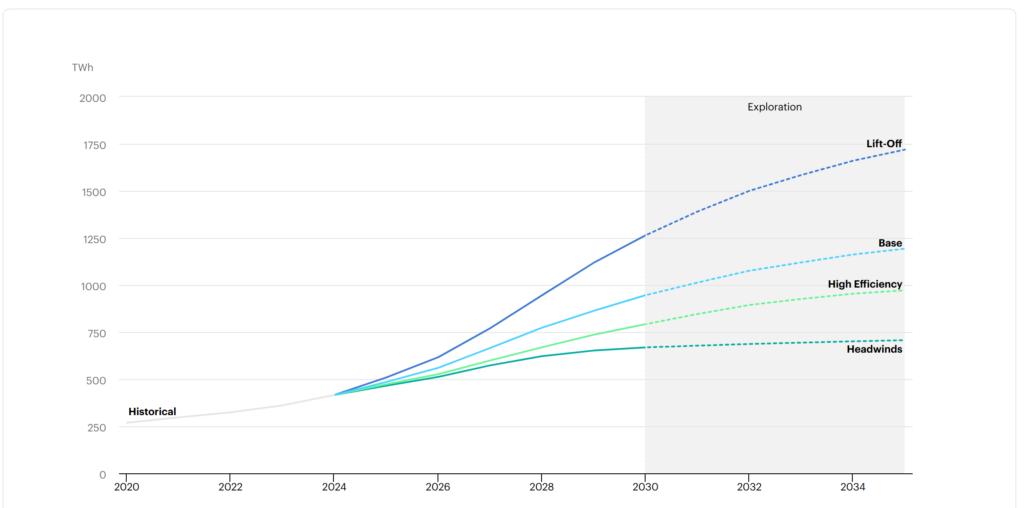AI is already straining power grids around the world, but according to a new report, we’re only just getting started.
By 2030, AI data centers will devour almost as much electricity as the entire country of Japan consumes today, according to the latest forecasts from the International Energy Agency (IEA).
Today’s data centers already gulp down about 1.5% of the world’s electricity – that’s roughly 415 terawatt hours every year. The IEA expects this to more than double to nearly 950 TWh by 2030, claiming almost 3% of global electricity.
The specialized hardware running AI systems is the real consumer. Electricity demand for these “accelerated servers” will jump by a stunning 30% each year through 2030, while conventional servers grow at a more modest 9% annually.
Some data centers already under construction will consume as much power as 2 million average homes, with others already announced for the future set to consume as much as 5 million or more.

A very uneven distribution
By 2030, American data centers will consume about 1,200 kilowatt-hours (kWh) per person – which is roughly 10% of what an entire US household uses in a year, and “one order of magnitude higher than any other region in the world,” according to the IEA.
Africa, meanwhile, will barely reach 2 kWh per person, though South Africa will stand out at 25 kWh per capita.
Regionally, some areas are already feeling the squeeze. In Ireland, data centers now gulp down 20% of the country’s electricity. Six US states devote more than 10% of their power to data centers, with Virginia leading at 25%.
Can clean energy keep up?
Despite fears that AI’s appetite might derail climate goals, the IEA believes these concerns are “overstated.”
Nearly half the additional electricity needed for data centers through 2030 should come from renewable sources, though fossil fuels will still play a leading role.
The energy mix varies dramatically by region. In China, coal powers nearly 70% of data centers today. In the US, natural gas leads at 40%, followed by renewables at 24%.

Looking ahead, small modular nuclear reactors (SMRs) may become increasingly important for powering AI after 2030.
Tech companies are already planning to finance more than 20 gigawatts of SMR capacity – a sign they’re thinking about long-term energy security.
Efficiency vs. expansion
The IEA outlines several possible futures for AI’s energy footprint.
In their “Lift-Off” scenario with accelerated AI adoption, global data center electricity could exceed 1,700 TWh by 2035 – nearly 45% higher than their base projection.

Alternatively, their “High Efficiency” scenario suggests that improvements in software, hardware and infrastructure could cut electricity needs by more than 15% while delivering the same AI capacity and performance.
The next decade will test our ability to develop AI that’s both powerful and energy-efficient.
Whether the tech industry can solve this puzzle may determine not just the future of artificial intelligence, but also its role in addressing, rather than worsening, our climate challenges.
The post Power-hungry AI will devour Japan-sized energy supply by 2030 appeared first on DailyAI.

